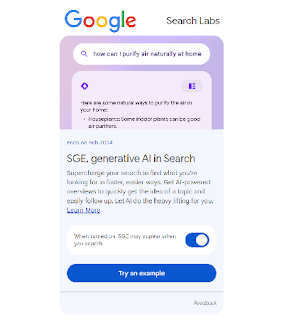How ChatGPT is Revolutionizing Scientific Research and Innovation through AI and NLP
Discover the impact of ChatGPT on scientific research and innovation, from enhancing data analysis to optimizing research methodology. Learn how AI and NLP are revolutionizing problem-solving and driving innovation.
Artificial Intelligence (AI) has been revolutionizing various fields of human activity,
and scientific research is no exception. One of the most significant
contributions of AI to the research community is the development of language
models such as ChatGPT.
ChatGPT is an AI-based language model that uses deep learning techniques to generate human-like text responses. It has the potential to transform the way scientists and researchers work by providing them with a powerful tool that can help them find solutions to complex problems in a matter of seconds.
ChatGPT: The Revolutionary Language Model
ChatGPT is a state-of-the-art language model developed by OpenAI. It is an extension of the GPT (Generative Pre-trained Transformer) series, which uses deep learning techniques to generate natural language. ChatGPT has been trained on a massive amount of text data and can generate responses to text inputs, making it an excellent tool for natural language processing.
In this article, we will discuss the impact of ChatGPT on scientific research and innovation.
ChatGPT and its potential applications in Scientific Research
ChatGPT is a powerful tool that can be used in various scientific research applications. One of the most promising applications is in the field of natural language processing (NLP). NLP is a subfield of AI that deals with the interaction between computers and human language. With ChatGPT, researchers can train the model on a large corpus of scientific literature and use it to generate summaries, answer questions, and even perform tasks such as language translation.
ChatGPT and its Impact on Innovation
ChatGPT has the potential to spur innovation in scientific research by providing researchers with a tool that can help them find new insights and breakthroughs. By using ChatGPT, researchers can quickly sift through large volumes of scientific literature and identify patterns and relationships that would otherwise be difficult to detect. This can lead to new discoveries and innovations in various scientific fields.
ChatGPT's impact on innovation has been significant, particularly in the field of natural language processing. ChatGPT has enabled developers to create new and innovative products and services that were not possible before.
Below are some examples of how ChatGPT has impacted innovation.
Chatbots and Virtual Assistants:
Chatbots and virtual assistants are becoming increasingly popular in various industries, such as customer service and healthcare. ChatGPT has made it possible to create chatbots and virtual assistants that can interact with users in a more human-like way. This has improved the user experience and made these services more accessible to a wider range of users.
Language Translation:
ChatGPT has also improved the accuracy and efficiency of language translation services. With ChatGPT, developers can create language translation models that can translate text more accurately and in a more human-like way. This has made it easier for people to communicate with each other, regardless of language barriers.
Content Creation:
ChatGPT
has also impacted content creation, making it easier for writers to create
high-quality content quickly. ChatGPT can generate articles, blog posts, and
social media posts, among others. This has made it possible for businesses to
generate more content at a faster pace, improving their online presence and
attracting more customers.
Examples
of ChatGPT in Scientific Research and Innovation
To illustrate the potential impact of ChatGPT on scientific research and innovation, let's take a look at a few examples of ChatGPT in action.
Example 1: Drug discovery
One of the most significant challenges in drug discovery is the time and resources required to test and validate new compounds. With ChatGPT, researchers can quickly analyze large volumes of scientific literature and identify potential new drug targets. This can lead to faster and more efficient drug discovery processes.
Example 2: Climate research
Climate research is another field that can benefit significantly from ChatGPT. By training the model on a large corpus of climate data, researchers can use ChatGPT to generate climate simulations and make predictions about future climate patterns.
Example 3: Natural language processing
ChatGPT can also be used in natural language processing tasks such as language translation. By training the model on a large corpus of scientific literature in different languages, researchers can use ChatGPT to translate scientific papers and publications into different languages, making scientific research more accessible to a global audience.
Example 4: Generating and summarizing research papers
Researchers
can use ChatGPT to generate research papers on a specific topic, which can save
them time and effort in writing the paper themselves.
ChatGPT can also summarize research papers, making it easier for researchers to quickly understand the key findings and implications.
Example 5: Analyzing and interpreting data
ChatGPT can assist with analyzing large sets of data, providing insights and identifying patterns that might be difficult to detect otherwise.
ChatGPT can also help researchers interpret their data and provide recommendations for further analysis.
Example 6: Predictive modeling
ChatGPT can use predictive modeling to forecast trends and outcomes in scientific research, enabling researchers to make data-driven decisions.
Example 7: Identifying research gaps and potential collaborations
ChatGPT
can scan through a vast amount of literature and identify potential research
gaps, helping researchers focus on the areas that require more attention.
ChatGPT can also identify potential collaborators based on their research interests and areas of expertise, facilitating collaborations and advancing scientific research.
Example 8: Providing real-time assistance
ChatGPT can provide real-time assistance to researchers in their experiments and studies, helping them troubleshoot problems and make quick decisions.
Limitations and challenges of ChatGPT
Despite its potential applications and benefits, ChatGPT also faces some limitations and challenges.
One of the most significant challenges is the potential for bias in the training data. Since ChatGPT learns from large datasets, it can reflect any biases present in the data, leading to biased outputs.
Additionally, ChatGPT's ability to generate convincing text can also lead to the spread of misinformation if the model is not trained on accurate and reliable data.
Conclusion
ChatGPT has the potential to revolutionize the way scientific research is conducted by providing researchers with a powerful tool that can help them find new insights and breakthroughs in a matter of seconds.
By training the model on a large corpus of scientific literature, researchers can use ChatGPT to analyze data, generate summaries, and even translate scientific publications into different languages.
While
there are limitations and challenges associated with the use of ChatGPT, its
potential to drive scientific innovation cannot be ignored.




Comments
Post a Comment